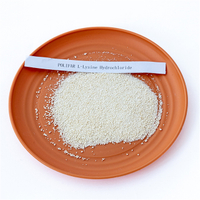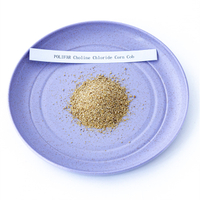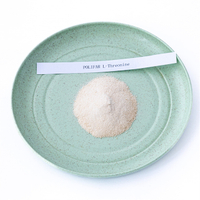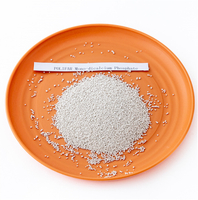Views: 0 Author: Site Editor Publish Time: 2024-04-03 Origin: Site








 In the livestock and poultry industry, as well as aquaculture, it is crucial to ensure that animals receive adequate nutrition. However, how to effectively provide comprehensive and balanced nutritional support has become the focus of farmers' attention. As a supplier focusing on livestock and poultry breeding, Polifar is committed to providing high-quality premixes for the breeding industry to help farmers improve production efficiency, reduce costs, and improve animal health. In this article, we’ll take a closer look at premixes.
In the livestock and poultry industry, as well as aquaculture, it is crucial to ensure that animals receive adequate nutrition. However, how to effectively provide comprehensive and balanced nutritional support has become the focus of farmers' attention. As a supplier focusing on livestock and poultry breeding, Polifar is committed to providing high-quality premixes for the breeding industry to help farmers improve production efficiency, reduce costs, and improve animal health. In this article, we’ll take a closer look at premixes.
The composition of the premix can vary depending on the application area, animal species, growth stage, etc., but usually includes the following basic components:
Vitamins: Vitamins are organic compounds necessary for animal growth and metabolism. Premixes usually contain various vitamins, such as vitamin A, vitamin D, vitamin E, vitamin K, etc. These vitamins are essential for an animal’s immune system, growth and development, bone health, and more.
Minerals: Minerals are important components of animal body structure and physiological functions and are catalysts for many biochemical reactions. Minerals often added to premixes include calcium, phosphorus, potassium, magnesium, iron, zinc, copper, manganese, selenium, etc. These minerals play important roles in bone health, nervous system function, blood clotting, and more in animals.
Amino acids: Amino acids are the building blocks of proteins and are critical for animal growth and development, tissue repair, and immune function. Amino acids commonly added to premixes include lysine, threonine, tryptophan, methionine, etc. These amino acids help animals make the most of the protein in their feed.
Enzyme preparations: Enzyme preparations can promote the decomposition of complex carbohydrates, proteins, and other substances in the feed that are difficult to digest, and improve the animal's digestion and absorption rate of the feed. Common enzyme preparations include amylase, protease, cellulase, etc.
Other additives: Other feed additives may also be added to the premix, such as antibiotics, antioxidants, acid-base balancers, antifungal agents, etc., to help control the quality of the feed and promote the growth and health of the animals.
The formula of the premix needs to be adjusted according to the specific situation to meet the nutritional needs and growth and development requirements of the animal.
The proportion of feed premix refers to the proportional relationship between the amount of premix added to animal feed and the total feed amount. This ratio will vary depending on factors such as animal species, growth stage, physiological state, and expected production performance.
Generally speaking, the proportion of feed premixes usually accounts for a smaller proportion of the feed, but the nutrients and additives they provide are vital to the health and growth of the animal. Here are some examples of common feed premix ratios:
Poultry feed: In poultry feed, the proportion of premix is usually low, generally between 1% and 3%, depending on the type of poultry (e.g. chicken, duck, turkey, etc.) and its growth stage (e.g. brooding, growth, laying period, etc.).
Pig feed: The proportion of premix in pig feed is also low, usually between 1% and 5%, depending on the growth stage of the pig (such as the growing period, fattening period, etc.) and the expected production performance.
Cattle feed: The proportion of premix in cattle feed is relatively low, generally between 1% and 4%, depending on the breed, growth stage, and purpose of the cattle (such as dairy cattle, beef cattle, etc.).
Aquaculture feed: In aquaculture feed, the proportion of premix is usually higher, generally between 5% and 10%, because aquatic animals have higher demand for nutrients such as vitamins and minerals.
There is a close relationship between premix and feed, and together they form an important part of the animal feeding industry.
Provide comprehensive nutritional support: Premix is a mixture that contains a variety of nutrients and additives, including vitamins, minerals, amino acids, etc. They are added to feed to provide the complete nutritional support necessary for an animal to grow, develop, and sustain life.
Supplementary deficiencies in the feed: The raw materials of the feed may have imbalanced or insufficient nutrients. The addition of premixes can make up for these deficiencies and ensure that the animals obtain the various nutrients they need.
Adjust the feed formula: The formula of the premix can be adjusted according to the animal species, growth stage, and production goals to meet the specific nutritional needs of different animals. This flexibility allows feed manufacturers to adjust feed formulations based on market demand and animal health.
Improve the quality and efficiency of feed: The addition of premix can increase the nutritional value and stability of feed, and improve the growth rate, production efficiency, and product quality of animals. This is very important for farmers because it can help them improve production efficiency and reduce costs.
In summary, the relationship between premix and feed is complementary to each other. Through the addition of premix, nutritional balance, quality improvement, and production efficiency of feed can be achieved, thereby promoting animal health and the sustainability of the breeding industry. develop.
There is a close relationship between premixes and feed additives, which together provide necessary nutritional and functional support for animal feeds.
Together they make up feed formulations: Premixes and feed additives are often mixed and added to animal feeds to ensure that animals receive comprehensive nutritional support and other functional properties. Premixes provide basic nutrients such as vitamins, minerals, and amino acids, while feed additives supplement additional functional ingredients such as antibiotics, antioxidants, enzymes, and more.
Supplementing nutritional deficiencies in feed: Feed raw materials may have nutritional deficiencies or deficiencies, and the addition of premixes and feed additives can make up for these deficiencies and ensure that animals receive the comprehensive nutrition they require. For example, premixes provide vitamins and minerals, while feed additives can provide additional nutritional enhancers such as amino acids and fatty acids.
Jointly promote animal growth and health: The addition of premixes and feed additives can promote animal growth and health. Premixes provide necessary nutritional support, while feed additives can enhance the disease resistance of the feed, improve digestion and absorption rates, and promote animal growth efficiency.
Use together for best results: Premixes and feed additives are usually used together, and their addition amounts and proportions need to be adjusted according to the animal's species, growth stage, and production goals. Through reasonable matching and adjustment, the best nutritional supply and production efficiency can be achieved.
Precise nutritional supply: The premix can provide the precise nutritional components required by animals, including vitamins, minerals, amino acids, etc., ensuring that animals receive comprehensive and balanced nutritional support.
Convenient formula adjustment: The formula of the premix can be adjusted according to the animal's species, growth stage and production goals, making the feed formula more flexible and personalized.
Convenient use: The premix has good stability and easy storage properties, making it easy to transport and use, reducing the complexity of feed production and mixing.
Improve feed uniformity: Premixes can evenly distribute nutrients in the feed, ensuring that each animal can obtain the same nutritional level and avoiding the problem of nutritional imbalance in the feed.
Increase production efficiency: Through the use of premixes, the growth rate of animals can be increased and production performance can be improved, thereby improving production efficiency and economic benefits.
Higher cost: Premixes are more expensive to produce and purchase, especially those containing high-quality, high-purity nutrients, which may increase feed costs.
Dependence on external supplies: The production of premixes relies on external suppliers to provide various nutrients and additives, which places certain requirements on the stability of the supply chain.
May lead to excess or deficiency: The formula of the premix needs to be precisely controlled, otherwise it may lead to excess or deficiency of certain nutrients, affecting the health and production performance of the animal.
Quality control is difficult: The quality control of premixes needs to be strictly implemented, including raw material selection, production technology, testing and monitoring, etc., so more manpower and material costs need to be invested.
In summary, premixes have many advantages in animal feeding, but attention must also be paid to their rational use, cost control, and quality and safety.
In the highly competitive livestock and poultry breeding market, choosing the right premix supplier is crucial. As an experienced and reputable supplier, Polifar will wholeheartedly provide you with high-quality premix products and excellent services to help you achieve the success and development of your breeding industry. Let us work together to create a better breeding future!






